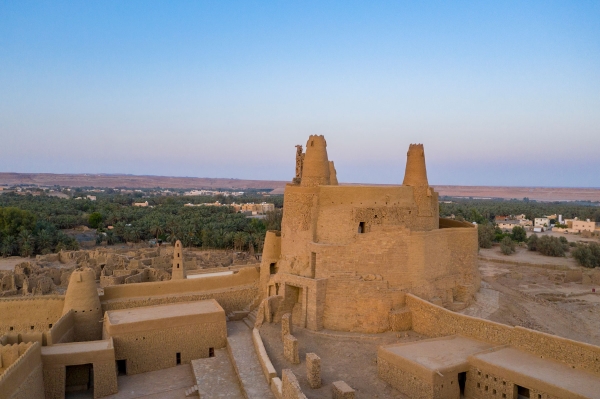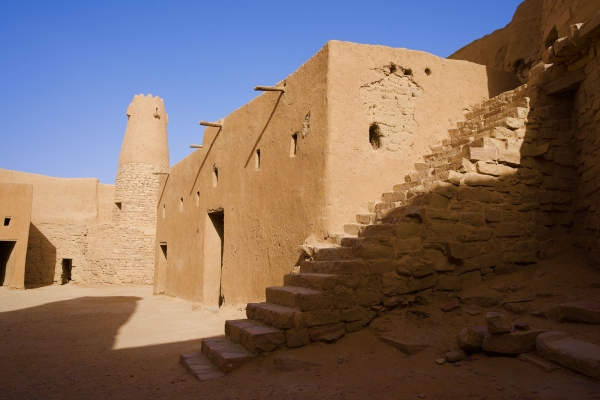

Marid Castle is a historic heritage castle, and a cultural landmark in Dawmat al-Jandal Governorate, al-Jawf Province, northwest of the Kingdom of Saudi Arabia. It consists of numerous buildings, forts, bastions, and watchtowers dating back to the first and second centuries, making it one of the oldest archaeological sites in the Kingdom.
History of Marid Castle
The castle gained significance as an archaeological landmark after excavations on the lower part of the castle revealed Nabataean and Roman pottery dating back to the first and second centuries. Some experts suggest the castle was likely built during the era of Thamud, the people of Prophet Saleh. The castle is situated in al-Dara' District atop a semi-circular hill, adjacent to the ancient Omar Bin al-Khattab Mosque, thereby reflecting its positioning within a tourist-centric area. An informative plaque near the castle reads: "The earliest mention of the castle is when the Queen Zenobia of Palmyra invaded Dawmat al-Jandal and Tayma in 240-274 but failed to conquer the castle, leading to her famed saying: "Marid was rebellious and al-Ablaq fortress was unconquerable."
Design of Marid castle
Marid Castle was built from stone and mud on a rocky plateau, 620 m above sea level to serve as an impervious fortress in the face of enemies. It contains four conical towers punctuating its four sides. The various chambers are distributed throughout the castle, where mud-built chambers are located on the northeast and southeast flanks, whereas the northwest side has a two-story stone building. The castle’s foundations were built from stone, and their top parts were complemented by bricks.
Components of Marid castle
Marid Castle comprises buildings, forts, bastions, and watchtowers. The castle’s main building consists of two floors: the ground floor was built and scaffolded by stone, with a longitudinal defensive wall joined to it perpendicularly. Above this wall is a passage leading to a defensive tower, with two gates, one near the fort’s southern side and the other next to the north tower. The castle’s upper floor contains four conical towers, built in different time periods, and the castle also has two wells, guardrooms, archers’ positions, and surveillance posts.
Significance of Marid castle
With the passage of time, the castle's significance in terms of heritage grew. It bears witness to the Kingdom's history during and before that era and continues to maintain its distinctive historical construction. The castle was designated as an archaeological site after the establishment of the General Authority for Tourism and National Heritage (now the Ministry of Tourism) initiated a project to restore and rehabilitate it, intending to transform it into a tourist attraction and conduct periodic maintenance accordingly.
Related quizzes
Related articles


